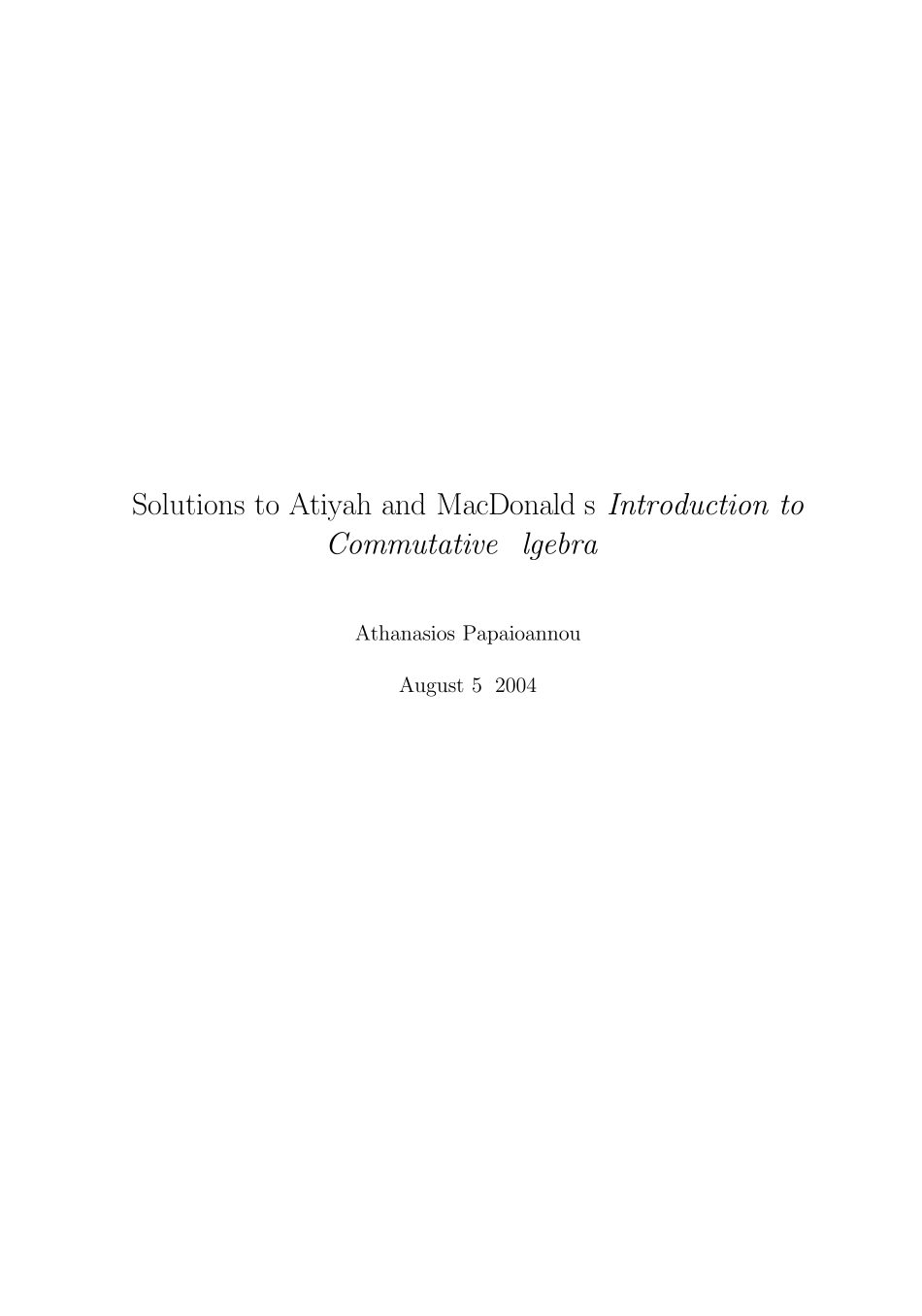Solutions to Atiyah and MacDonald’s Introduction toCommutative AlgebraAthanasios PapaioannouAu gu st 5, 20042Chapter 1Rings and Ideals1.1We see that x ∈ R impliesx ∈ J (the Jacobsonradical),hence 1 + xA ⊂ A×. In particular, 1 + x is a unit.We can now easily deduce that the sum of a nilpotent element and a unit is a unit itself.1.2We have the following:(i) If f(x) = a0+ a1x + . . . + anxn i s a u n i ti n A[x] , l e tg(x) = b0+ b1x + . . . + bmxm be its inverse.We deduce that a0 is a unit.We use inductionon n to prove that the coefficients are nilpotent. The casen = 0 is a tautology. If the proposition holds for n −1, then we see that ar+1nbm−r = 0 (we just write downexplicitly the relations that ensue from fg = 1 andthenmultiply each of them by increasing powers of an).In particular, this implies that am+1nb0 = 0 and, since b0 is a unit, we deduce that am+1n= 0. Hence an isnilpotent and we may apply the inductive hypothesis.The converse follows from exercise 1 and exercise 2, (ii).(ii) If f(x) is nilpotent, then we can apply induction to n to show that all its coefficients are nilpotent.The case n = 0 is a tautology. In the general case, it’s apparent that the leading coefficient will be amn forsuitablem ∈ N hence an is nilpotent. Now the inductive hypothesis applies.Conversely, if all the coefficients of f(x) are nilpotent and d ∈ N is such that adi = 0, 0 ≤ i ≤ n (e.g. letd be the sum of the orders of all the orders of the coefficients),then we see that f(x)d = 0.(iii) If f is a zero divisor, then let g be a polynomial of minimal order, such that fg = 0. If g =b0+ b1x+ . . . + bmxm i sn o to fd e g r e e0 ,t h e nanbm = 0 ,h...


